Related Research Articles
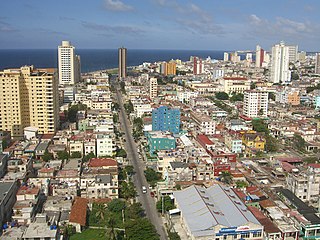
Havana is the capital and largest city of Cuba. The heart of the La Habana Province, Havana is the country's main port and commercial center. It is the most populous city, the largest by area, and the second largest metropolitan area in the Caribbean region. The population in 2002 was 2,137,847 inhabitants, and its area is 728.26 km2 (281.18 sq mi) for the capital city side and 8,475.57 km2 for the metropolitan zone.

Buena Vista Social Club was a musical ensemble primarily made up of Cuban musicians, formed in 1996. The project was organized by World Circuit executive Nick Gold, produced by American guitarist Ry Cooder and directed by Juan de Marcos González. They named the group after the members' club of the same name in the Buenavista quarter of Havana, a popular music venue in the 1940s. To showcase the popular styles of the time, such as son, bolero and danzón, they recruited a dozen veteran musicians, some of whom had been retired for many years.

Amelia Peláez del Casal was an important Cuban painter of the Avant-garde generation.
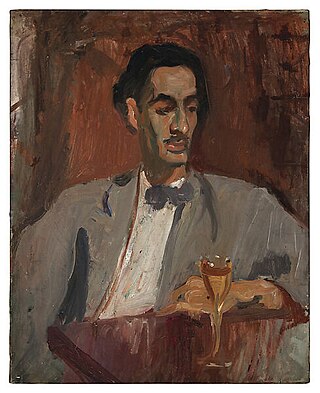
Carlos Enríquez Gómez, was a Cuban painter, illustrator and writer of the Vanguardia movement. Along with Víctor Manuel, Amelia Peláez, Fidelio Ponce, Antonio Gattorno, and other masters of this period, he was involved in one of the most fertile moments in Cuban culture. He is considered by critics to be one of the best, and most original, Cuban artists of the 20th century.
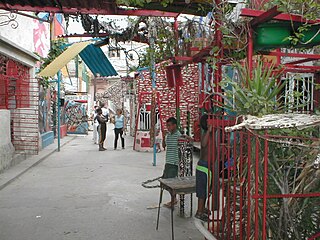
Cuban art is an exceptionally diverse cultural blend of African, South American, European, and North American elements, reflecting the diverse demographic makeup of the island. Cuban artists embraced European modernism, and the early part of the 20th century saw a growth in Cuban avant-garde movements, which were characterized by the mixing of modern artistic genres. Some of the more celebrated 20th-century Cuban artists include Amelia Peláez (1896–1968), best known for a series of mural projects, and painter Wifredo Lam, who created a highly personal version of modern primitivism. The Cuban-born painter Federico Beltran Masses (1885–1949), was renowned as a colorist whose seductive portrayals of women sometimes made overt references to the tropical settings of his childhood.

Víctor Manuel García Valdés was a Cuban painter. He was an early member of the "Vanguardia" movement of artists who, beginning in the 1920s, combined European concepts of Modern art with native Primitivism to create a distinctly Cuban aesthetic.

Publio Amable Raúl Martínez González, known as Raúl Martínez, was a Cuban painter, designer, photographer, muralist, and graphic artist. He is best known for colorful pop-art portraits of leading Cuban political figures including José Martí and Camilo Cienfuegos.
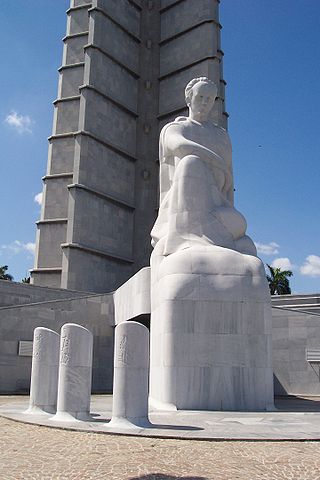
Juan José Sicre was one of the greatest Cuban sculptors. His most famous sculpture is of José Martí y Pérez (1958) in the Plaza de la Revolución in Havana.
Jorge Luis Sicre-Gattorno is a Cuban-American painter.

Juan Boza Sánchez or Juan Stopper Sanchez was a gay Afro-Cuban-American artist specializing at painting, drawing, engraving, installation and graphic design.
Cundo Bermúdez, born Secundino (Cundo) Bermúdez y Delgado, was a Cuban painter. Born in Havana, Cuba, he died of a heart attack in his Westchester home on October 30, 2008.
Academia Nacional de Bellas Artes San Alejandro, is the oldest and most prestigious fine arts school in Cuba. It is also known as Escuela Nacional de Bellas Artes "San Alejandro", Academia San Alejandro, or San Alejandro Academy. The school is located in Marianao, a suburb of Havana, and was founded in 1818 at the Convent of San Alejandro.
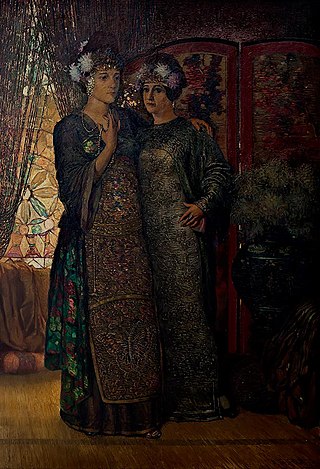
Antonio Sánchez Araujo (1887–1946) was a Cuban costumbrista painter, during the early years of the Cuban republic. His paintings have been admired for their strong colorful and definite techniques. He was born in Santa Lucía, Oriente Province, in 1887. He formally started his drawing and painting studies at that institution located in Havana, Cuba.

Eduardo Abela (1889–1965) was a Cuban painter and comics artist. Born in San Antonio de los Baños, he studied at the San Alejandro Academy of Fine Arts, graduating in 1921. For the next decade he lived abroad, first in Spain and then in France. In Paris he became acquainted with numerous Cuban intellectuals; among them was Alejo Carpentier, who encouraged him to develop his talent to depict native Cuban themes. Encounters with the work of Jules Pascin and Marc Chagall further shaped his style. Upon his return to Cuba, Abela created the character of "El Bobo" as a protest against the Machado government. This he drew for El Diario de la Marina from 1930 until 1934. Abela's criollo character played the fool to satirize the difficult social and political situation in Cuba under Machado. In the second half of the 1930s Abela returned to painting, employing a naturalistic style influenced by early Renaissance painting and the Mexican mural movement. At this time he focused on an idealized view of the Cuban peasant and the countryside, as seen in his most renowned painting, Los Guajiros (1938), in which the Classical sobriety and order is the result of his contact with Italian medieval and Renaissance art. He also continued to paint, serving later in his career as a cultural attaché to Mexico and Guatemala, and in 1937 operating the short-lived Free Studio of Painting and Sculpture. Abela died in 1965.

Fidelio Ponce de León was the pseudonym of Alfredo Fuentes Pons, a Cuban painter. A native of Camagüey, he studied at the San Alejandro Academy in Havana from 1913 until 1918. Along with Antonio Gattorno, Victor Manuel, Amelia Peláez, and Wifredo Lam, he is considered part of the "Vanguardia" movement in Cuban art; however, unlike many of his contemporaries he never studied in Europe, and so had comparatively little contact with European modernism. Nevertheless, he listed among his influences Amedeo Modigliani, along with El Greco, Rembrandt, and Bartolomé Esteban Murillo. His paintings are also reminiscent of those of Edvard Munch. Later in life Ponce de León contracted tuberculosis; he died in Havana on 19 February 1949. The Museum of Modern Art is among the museums containing examples of his work.

Víctor Patricio de Landaluze, was a Spanish-born painter active for much of his career in Cuba.
José María Mijares was a Cuban contemporary visual artist. He began drawing in his adolescent years and entered the San Alejandro Academy of Fine Arts on a scholarship at the age of 16. His greatest influences were the artists of the "Havana School": Carlos Enríquez, René Portocarrero, Cundo Bermúdez, as well as his professors, most notable being modernist painter Fidelio Ponce. He was also a part of the influential group, Los Diez Pintores Concretos, or as they are usually referred to, Los Diez. Although the group had a relatively short life, 1959–1961, and exhibited together only a few times, they remain an important part of Cuba's art history especially in the pre-Castro years and leading up to the revolution. He left Cuba in 1968, resigning his teaching position at the academy when Fidel Castro came into power. Based in Miami, he continued to be a prolific painter and until his death in 2004, at the age of 82.

Mario Torroella is a Cuban-American visual artist and architect based in Cambridge, Massachusetts. He is a co-founder of the firm HMFH Architects and a Fellow of the American Institute of Architects. His art is closely associated with the Cuban exile experience and has become well known in the broader international Cuban diaspora.